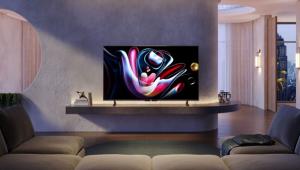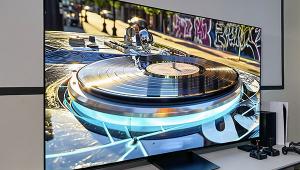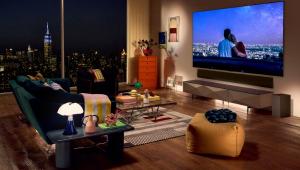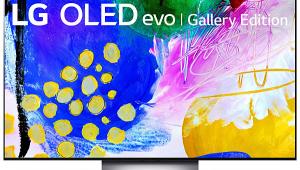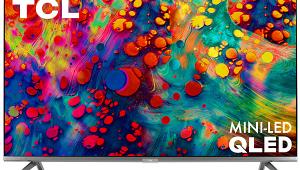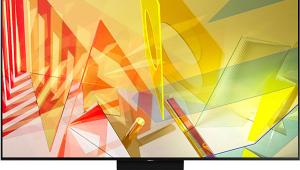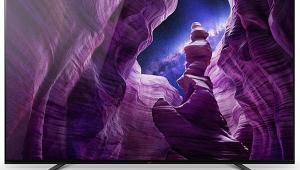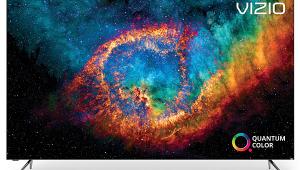Samsung UN60JS7000FXZA LCD Ultra HDTV Review Settings
Unit-to-unit sample variations, the viewing environment, and the source might render these recommendations less than optimum. They are provided only as a potentially useful starting place.
All the settings here are for controls found in the user menus, and (except as noted) for non-HDR source material. Those settings most likely to translate reliably from one sample to another involve specific features with only a few selections, such as Gamma and Noise Reduction. The ones most likely to be subject to sample variations are video controls offering a wide range of adjustment, such as white balance (grayscale) and color management (where available). It’s also unknown if different sized sets in a manufacturer’s same model range will perform optimally with these settings.
We strongly recommend that you find the optimum basic video settings for your sample by using one of the many available display setup DVDs, such as Digital Video Essentials (DVD) or DVE HD Basics (Blu-ray). These will help you to set the basic controls correctly—Brightness, Contrast, Sharpness, and sometimes Color and Tint. Experimenting with the more complex color calibration and other controls in the user menus will do no harm; the changes may be easily reset. But tuning a set "by eye" with such controls is a hopeless task and no substitute for a full calibration, which is best left to a trained and properly equipped technician such as those certified by the Imaging Science Foundation (ISF) or THX.
| Picture Mode | Movie |
| Backlight | 17 |
| Contrast | 68 |
| Brightness | 45 |
| Sharpness | 20 |
| Color | 48 |
| Tint | G50/R50 |
| Picture Size | 16:9 |
| PIP | N/A |
Advanced Settings
| Dynamic Contrast | Low | |
| Black Tone | Off | |
| Flesh Tone | 0 | |
| RGB Only Mode | Off | |
| Color Space | Custom | (see below) |
| 2p White Balance | (see below) | |
| 10p White Balance | (see below) | |
| Gamma | -2 or -3 |
Picture Options
| Color Tone | Warm2 |
| Digital Clean View | Off |
| MPEG Noise Reduction | Off |
| HDMI Black Level | N/A |
| HDMI UHD Color | Off |
| Film Mode | Auto 2 |
| Auto Motion Plus | Off |
Custom Color Space
| R | G | B | |
| Red | 46 | 8 | 0 |
| Green | 31 | 52 | 11 |
| Blue | 0 | 9 | 65 |
| Cyan | 27 | 49 | 52 |
| Magenta | 41 | 15 | 53 |
| Yellow | 54 | 50 | 8 |
2-Point White Balance
| Offset | Gain | |
| Red | -2 | 3 |
| Green | -1 | 0 |
| Blue | 6 | -1 |
10-Point White Balance
| 10 | 20 | 30 | 40 | 50 | 60 | 70 | 80 | 90 | 100 | |
| Red | 0 | 1 | 2 | 5 | 3 | 2 | -1 | 0 | -1 | 0 |
| Green | 0 | -2 | 0 | 0 | 0 | 0 | 0 | 0 | 0 | 0 |
| Blue | 0 | 2 | -3 | -10 | -3 | -1 | 0 | 0 | 0 | 3 |
The following settings were used for HDR. Be aware that these were performed subjectively, since the calibration paradigms for HDR, not to mention appropriate test patterns and perhaps additional test equipment, are not yet available outside of industry labs. They may also be appropriate only for the grading used to produce the severely limited HDR material made available to us.
| Backlight | 14 |
| Contrast | 87 |
| Brightness | 47 |
| Sharpness | 43 |
| Color | 55 |
| Tint | G50-R50 |
| Dynamic Contrast | Low |
| Color Space | Auto |
| White Balance | |
| 2-Point | As above |
| 10-Point | Off |
| Color Space | Auto |
| Gamma | 0 |


